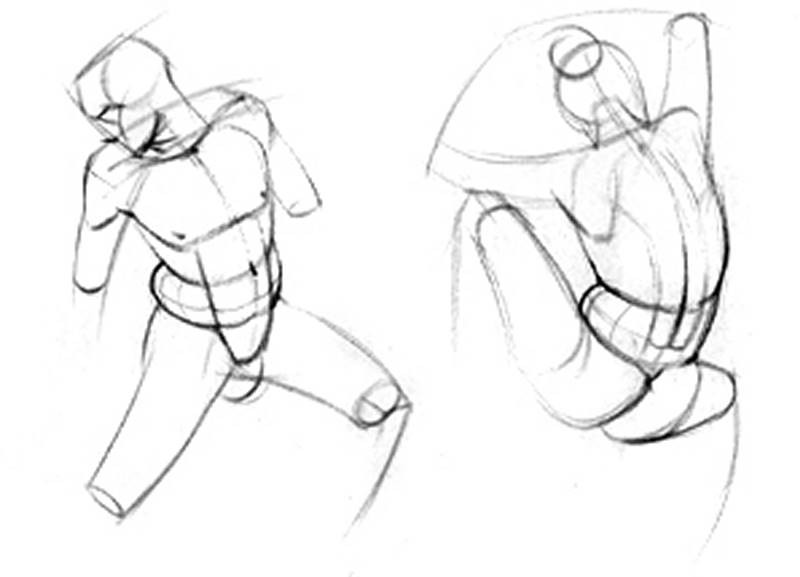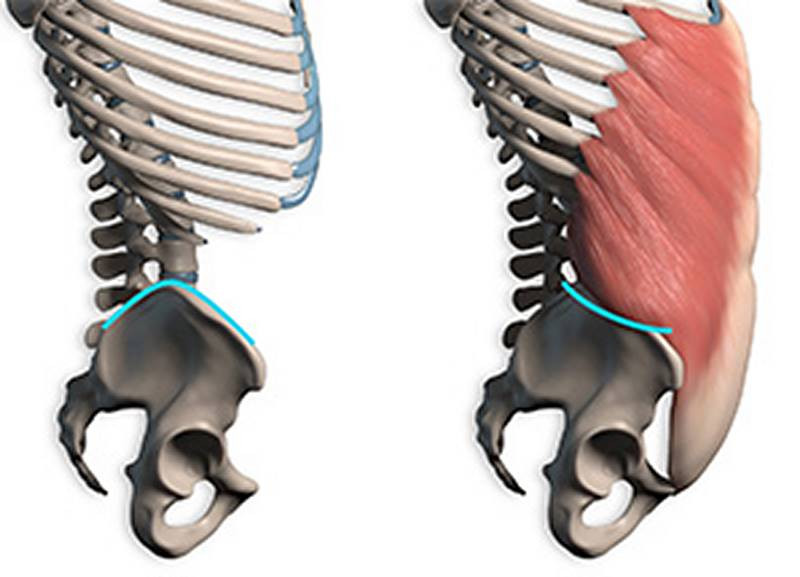The external oblique is divided into two very distinct portions. The Thoracic Portion and the Flank Portion.
The Thoracic Portion
The Thoracic Portion is the top half of the oblique. The attachments on the ribs create a stair-stepping border that's lower toward the back. This border interdigitates with the serratus anterior muscle and looks like interlocking fingers. The digits of the serratus are more horizontal than the external oblique.
The digits of the thoracic portion are commonly confused with the ribs. You can see the forms of one or the other depending on the pose and physique of the model.
When the muscle is stretched, and when inhaling, individual ribs can easily be seen through the oblique. When the oblique is flexed, its long, tube-like digits overpower and hide the ribs.
Still not sure what you’re looking at?
The ribs are more horizontal and curve upward where the costal cartilage begins, whereas external oblique bundles are straight and parallel with each other. They travel downward at a 45 degree angle.
The Flank Portion
The lower half of the oblique is called the flank portion. The angle of the fibers is more vertical toward the back, directly connecting the rib cage to the pelvis.
This muscle mass creates an unpopular duo with fat. Yeah, I’m talking about “muffin tops”. Or as I prefer to call them, the “love handles”.
The basic form resembles a tire or inner tube that you wear around your waist. A tube that stretches and compresses between the rib cage and pelvis. Even on thin individuals and flexing muscle men, the flank portion usually has a smooth, convex form. The local fat smooths over any striations. But of course, there are exceptions.

Sometimes you'll see a cylindrical continuation of the form along the bottom of the rectus abdominis. This is actually the form of the Internal oblique and transversus abdominis, which we'll learn about in the premium section.

There’s an important difference between the shape of the skeleton and the shape of the flank. The oblique inserts onto the external edge of the iliac crest, which makes the border of the oblique lower than the border of the iliac crest. This new, lower border has a soft S curve, swooping down under the iliac crest, and then back up wrapping over and to the inside of the ASIS. The ASIS proves to be a trustworthy landmark once again, providing a useful reference for constructing the torso.
So, remember this. You’ll see either ribs or muscle striations in the thoracic region. The thickest muscle striations are in the middle. And you will almost always see a bulge at the flanks.
Premium Version
Check out the extended premium video to learn about oblique physique variations, the internal oblique, and more. All the anatomy premium lessons have 3d models and ebooks.



















